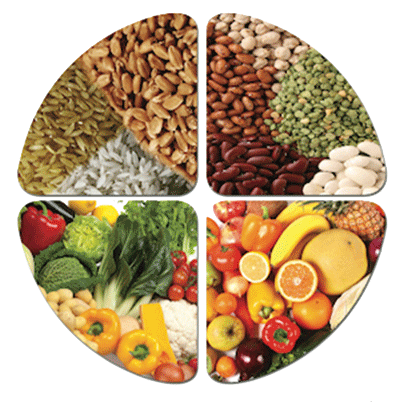I lived several decades on this planet before I ever heard anyone talk about phytonutrients. I knew the Greek word for plant was phyto, so I had a fair idea of what these things were once they came to my attention. But I had no idea why I should care about them. After all, if they were essential to human health, surely someone would have told me about them sooner!
 Phytonutrients refers to a collection of natural compounds that plants produce to promote their health and provide protection against germs, fungi, bugs, and other threats. You find phytonutrients in fruits, vegetables, whole grains, legumes, nuts, seeds, spices, and teas. While they’re not required for our survival, their presence in our diets proves beneficial.
Phytonutrients refers to a collection of natural compounds that plants produce to promote their health and provide protection against germs, fungi, bugs, and other threats. You find phytonutrients in fruits, vegetables, whole grains, legumes, nuts, seeds, spices, and teas. While they’re not required for our survival, their presence in our diets proves beneficial.
Plants and related foods produce thousands of phytonutrients. Here are some of the common ones that enjoy a bit of notoriety.
Carotenoids produce the brightly colored red, orange, and yellow tones found in carrots, pumpkin, sweet potatoes, tomatoes, papaya, sweet peppers, watermelon, and grapefruit. They’re also found in dark leafy greens, but the distinctive yellow hue gets masked by the green chlorophyll. As antioxidants, they tackle harmful free radicals to prevent damage to tissues throughout the body. They’ve also been associated with ocular health. Common carotenoids:
- Alpha-carotene, beta-carotene, and beta-cryptoxanthin (yellow, orange) can be converted to Vitamin A and support immune function and eye health.
- Lycopene (red, pink) has been linked to reduced risk of prostate cancer.
- Lutein and zeaxanthin in greens (spinach, kale, collards) may protect against cataracts and macular degeneration.
Ellagic acid can be found in grapes, berries, pomegranates, black currants, walnuts, pecans, and green tea. It has been shown to exert preventive and therapeutic effects against several types of cancers.1 Scientists theorize that it may help the liver neutralize cancer-causing substances as well as thwart the growth of cancer cells.
Flavonoids protect cells against oxidative damage and can help prevent the development of cardiovascular disease, diabetes, cancer, and cognitive impairment. As different flavonoids manifest their antioxidant and anticancer activities in different ways, it’s a good idea to take advantage of various plant food sources to cover all the bases. Rich sources of flavonoids include berries, apples, red cabbage, onions, kale, parsley, green tea, red wine, citrus fruits, soybeans, and ginger.
Glucosinolates take up residence primarily in cruciferous vegetables such as boy choy, broccoli, brussel sprouts, cabbage, cauliflower, kale, and mustard greens. They give these vegetables their distinctive aroma and flavor. Among other things, epidemiological studies suggest that these vegetables are protective against cancers of the lung and digestive tract.2 That being said, cooking can destroy the enzyme myrosinase that converts glucosinolates into active metabolites. It doesn’t erase the benefits but may downgrade them considerably.
Phytoestrogens feature prominently in flaxseeds, soy products (beans, nuts, tofu, tempeh), miso, and sesame seeds. They are structurally similar to the estrogen we product in our bodies, but they preferentially bind to different estrogen receptor molecules than our homemade variety.3 This characteristic gives them the ability to offer relief to menopausal symptoms (e.g., hot flashes 4) without the deleterious effects associated with traditional hormone replacement therapy. Phytoestrogens have also positive effects on bone density.
Resveratrol found in grape skins and red wine has been touted as protective against cardiovascular disease. According to nutritionfacts.org, resveratrol was shown to have no proven human activity in over 10,000 studies.5 The hype surrounding over-the-counter resveratrol supplements appears to have been driven by non-human research. In lieu of taking dietary supplements, eating the whole grape allows for the possibility of synergistic activity among multiple ingredients than enhances bioactivity.
References: